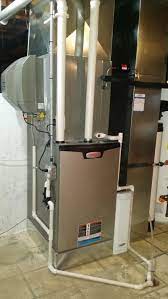Amana AC units have the potential to improve your indoor air quality. One of the most expensive utilities for many households is their energy bill. Many people have chosen to invest their renovation funds in high-efficiency heating and cooling systems because of the fluctuating cost of fuel and electricity. These systems are promoted as a fantastic method to save money and fuel.
To be sure you’re receiving value for your money, it’s important to know what you’re aware of the efficiency of the furnace before investing. The high-efficiency systems can sometimes be thousands or even hundreds of dollars more expensive than “conventional” or mid-efficiency heating systems. Many consumers have questioned whether they are getting a good return on their investment due to this.
How to Choose Between High-Efficiency And Mid-Efficiency Furnaces
There are two methods for calculating a heating system’s efficiency. You can choose the ideal heating system for your home and family by understanding how various measuring systems operate.
Stable-State Effectiveness
Examining a heating system’s steady-state efficiency is one of the most popular ways to ascertain its true efficiency. A heating system’s amount of usable heat is measured by steady-state efficiency.
Fuel is burned in all furnaces to produce heat. It will create almost comparable amounts of heat. This varies from furnace to furnace, depending on the consistency of the fuel. However, the steady-state efficiency of the system depends on how the heat is distributed throughout the house and how much is lost to the outside air.
More than aspects are considered apart from the ductwork in the house when calculating this number. Since there is a lot of wasted heat when a furnace starts and stops frequently, they are typically less efficient than furnaces that run continuously.
Periodic Effectiveness
A measurement known as seasonal or periodic efficiency accounts for all off-cycle losses. This covers fuel loss resulting from the pilot light and other causes.
To reduce this heat loss, high-efficiency and mid-efficiency heaters take several measures. To begin with, many of them do not consistently run a pilot light. However, high-efficiency furnaces will use many heat exchangers to recover the heat lost when the furnace shuts off. A greater amount of heat may be provided to the house from a given amount of fuel because of these heat exchangers’ increased heat extraction from the burning fuel.
Remember that the standardized ratings for multi speed and variable-speed furnaces only reflect the efficiency of the furnace itself while you are searching for a new furnace. Ensure your home is adequately insulated and sealed if you’re replacing an old, mid-efficiency furnace with a high-efficiency one. You might also think about installing storm doors and windows or replacing any older single-paned windows with more energy-efficient double-paned ones.
Conclusion
The importance of selecting a heater for your home is far greater than most people realize. High-efficiency furnaces are more energy-efficient than mid-efficiency furnaces since they provide more heat for heating your home with the same amount of fuel used. If you are searching online for the best AC contractor near me, we can help you! Amana AC and heater wall units have the potential to improve your indoor air quality, give you superior home comfort, and help you save money. Contact us now!


